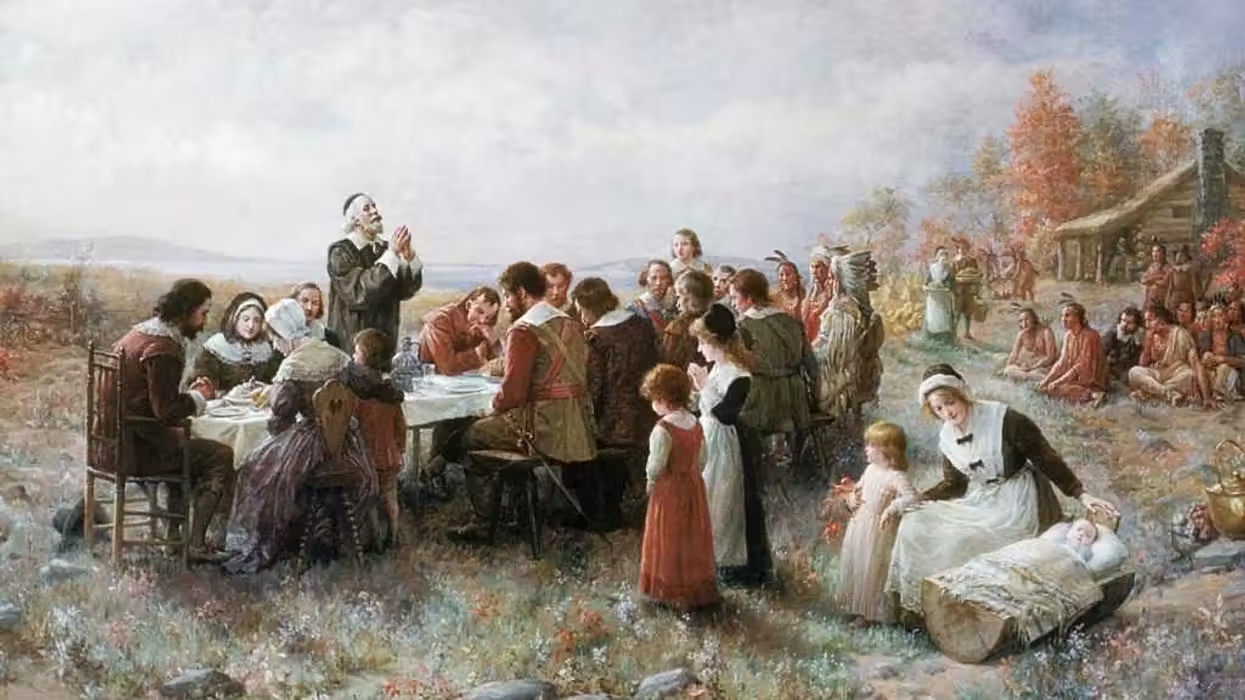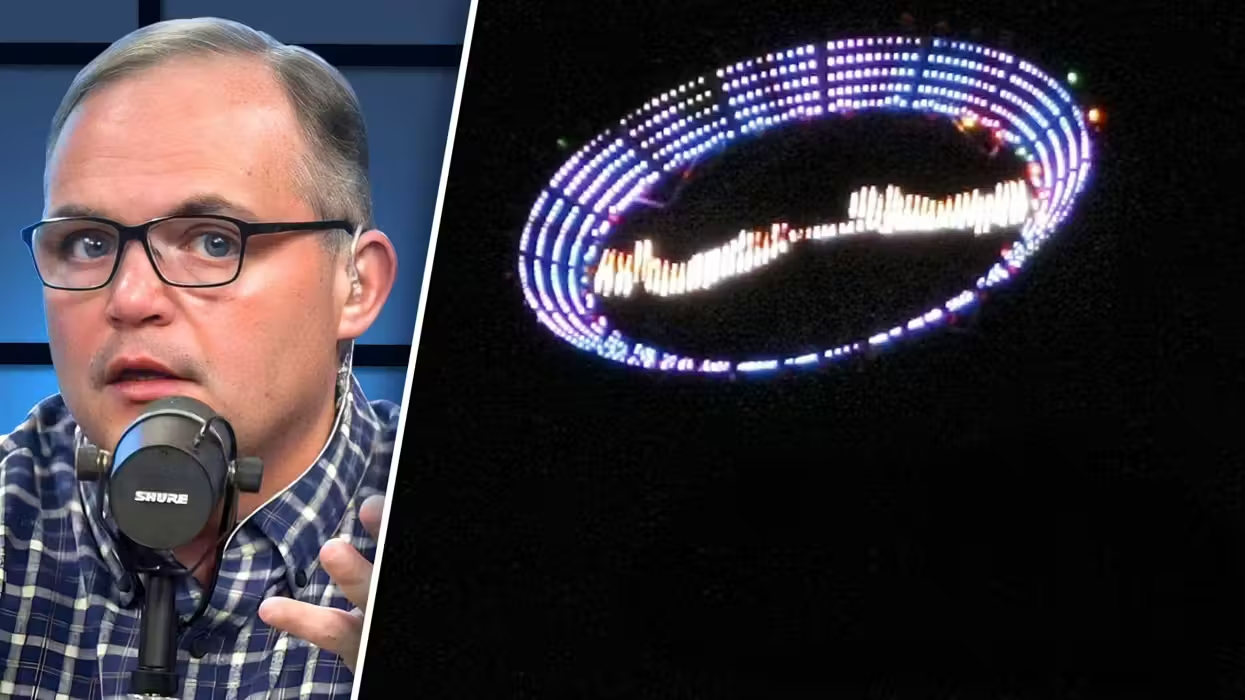Security will be high in the whole of Vatican City and Rome for the meeting of Catholic cardinals to choose a new pope beginning Tuesday. But the Sistine Chapel itself where the College of Cardinals will meet is getting specialized "anti-leak" technology as well.
As a report by Reuters put it, the pressure is on for this conclave to choose a new Bishop of Rome without any "Vatileaks," a reference to the documents leaked by the butler of Pope Emeritus Benedict XVI, who announced his resignation due to age earlier this year.
 An assistant carries equipment before a meeting on the eve of the start of a conclave on March 11, 2013 at the Vatican. Cardinals will hold a final set of meetings on Monday before they are locked away to choose a new pope to lead the Roman Catholic Church through troubled times. (Photo: JOHANNES EISELE/AFP/Getty Images)
An assistant carries equipment before a meeting on the eve of the start of a conclave on March 11, 2013 at the Vatican. Cardinals will hold a final set of meetings on Monday before they are locked away to choose a new pope to lead the Roman Catholic Church through troubled times. (Photo: JOHANNES EISELE/AFP/Getty Images)
AFP reported that measures to ensure the decision of who will be Pope Benedict's successor is secret until white smoke emerges from the Sistine Chapel's window include a system that jams electronic signals. The room is also being swept for bugs prior to the cardinals being locked inside. Even the moisture control system is being removed temporarily in case of bugs, AFP reported.
Although the cardinals will not be permanently locked in the room until a final decision is reached -- they now have more luxurious individual accommodations at night -- AFP noted that they will not have access to radios, television, newspapers or other modes of communication.
 Swiss guard arrive at the Vatican on March 11, 2013 on the eve of the conclave. (Photo: JOHANNES EISELE/AFP/Getty Images)
Swiss guard arrive at the Vatican on March 11, 2013 on the eve of the conclave. (Photo: JOHANNES EISELE/AFP/Getty Images)
As for security outside the event with the influx of tourists, thousands of extra police are on call. Some will be flying on helicopters, others will be gliding on the Tiber River on motorized rubber dinghies. Bomb-sniffing dogs will poke their noses down manholes and trash bins in security sweeps along the routes that both VIPs and faithful will cover en route to the square.
 Police gather near to the entrance to Vatican City on March 11, 2013 in Rome, Italy. (Photo: Dan Kitwood/Getty Images)
Police gather near to the entrance to Vatican City on March 11, 2013 in Rome, Italy. (Photo: Dan Kitwood/Getty Images)
As soon as the installation (when the pope is formally installed) date is known, some 500 Civil Protection volunteers, many of them ready to hop on Segways, will receive phone calls to spring into action. They know the drill for the big day: They'll report to Rome's main train station and the subway stop closest to the Vatican before dawn, helping like good shepherds to channel the flock along designated streets, closed to traffic, that lead to St. Peter's Square.
The Vatican's own security force, known as the gendarmerie, is in charge of the crowd inside the square and Italian police handle crowd control just outside the Vatican's boundaries. Security officers from both forces included plainclothes agents dressed up as pilgrims and tourists, listening to the chatter in the square and watching for any unusual movements.
 Planning for the moment when the next pope is proclaimed to the world, and for the installation ceremony a few days later, is a big-time guessing game. And that adds up to an ungodly logistical headache for the city of Rome. Nearly everything went smoothly for Benedict s last public appearances, although some faithful panicked during the retired pope s penultimate Sunday blessing from his studio window, when thousands of last-minute arrivals tried to squeeze through three narrow openings through a metal fence ringing the edge of the square. (Photo: AP/Gregorio Borgia)
Planning for the moment when the next pope is proclaimed to the world, and for the installation ceremony a few days later, is a big-time guessing game. And that adds up to an ungodly logistical headache for the city of Rome. Nearly everything went smoothly for Benedict s last public appearances, although some faithful panicked during the retired pope s penultimate Sunday blessing from his studio window, when thousands of last-minute arrivals tried to squeeze through three narrow openings through a metal fence ringing the edge of the square. (Photo: AP/Gregorio Borgia)
Giammario Nardi, who is organizing events in Rome, said the city does not yet know the installation date but speculation in the media is that it would be held on March 17. This date poses problematic for some of Rome's existing events including a marathon and St. Patrick's Day celebrations.
If the installation falls on marathon day, the race will go ahead but re-routed away from the Vatican. The marathon's start will also be put off until early afternoon, when presumably the new pope, pilgrims and Romans will be eating lunch. A main Rome boulevard usually on the marathon route will be fenced off so limousines can whisk VIPs straight to St. Peter's Square without dodging pedestrians - or marathon runners.
Thousands of Irish rugby fans are also expected in Rome because Ireland plays Italy the day before in the Six Nations tournament.
Nardi told the Associated Press that as for the type of crowd the installation could bring in, it varies based on the nationality and "charisma" of who is chosen as pope.
"The election of an Italian pope or a foreign pope will mean, as pilgrims go, different numbers and different types," he said.
Watch this report regarding the candidates and issues that might favor one over the other:
--
Related:
The Associated Press contributed to this report.
(H/T: Gizmodo)

 An assistant carries equipment before a meeting on the eve of the start of a conclave on March 11, 2013 at the Vatican. Cardinals will hold a final set of meetings on Monday before they are locked away to choose a new pope to lead the Roman Catholic Church through troubled times. (Photo: JOHANNES EISELE/AFP/Getty Images)
An assistant carries equipment before a meeting on the eve of the start of a conclave on March 11, 2013 at the Vatican. Cardinals will hold a final set of meetings on Monday before they are locked away to choose a new pope to lead the Roman Catholic Church through troubled times. (Photo: JOHANNES EISELE/AFP/Getty Images)





